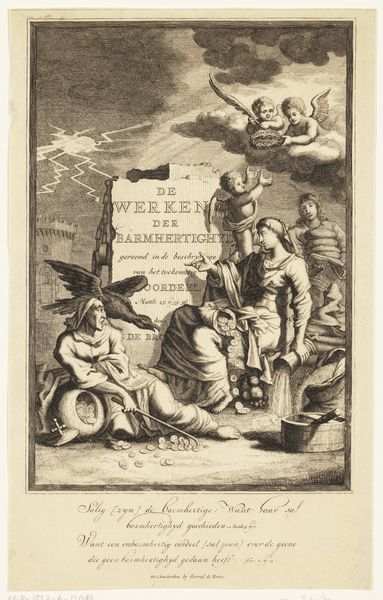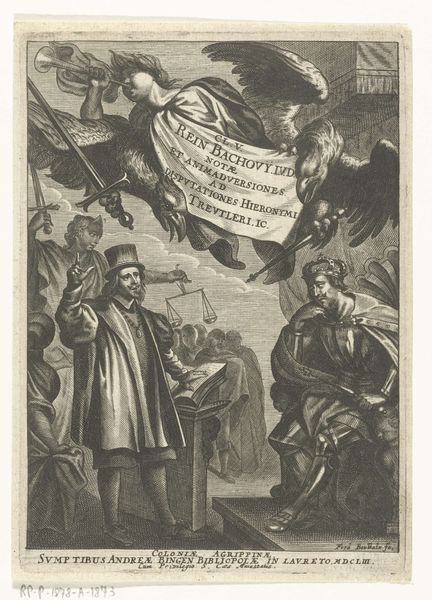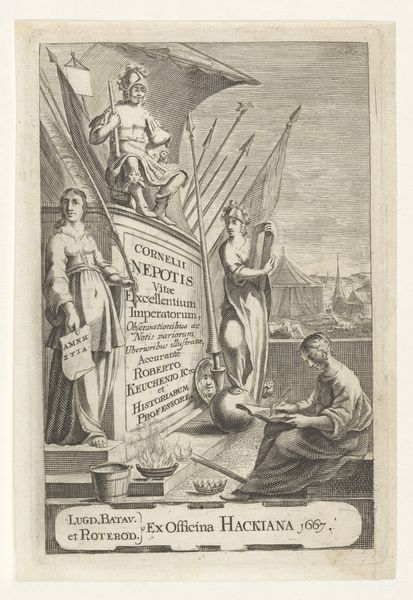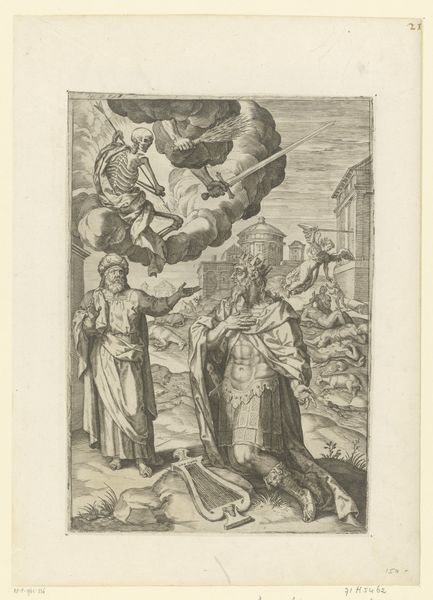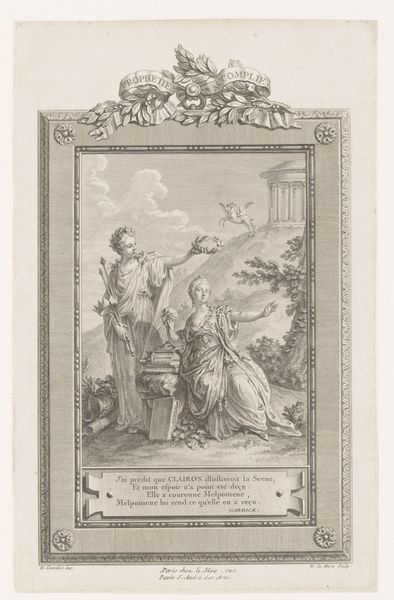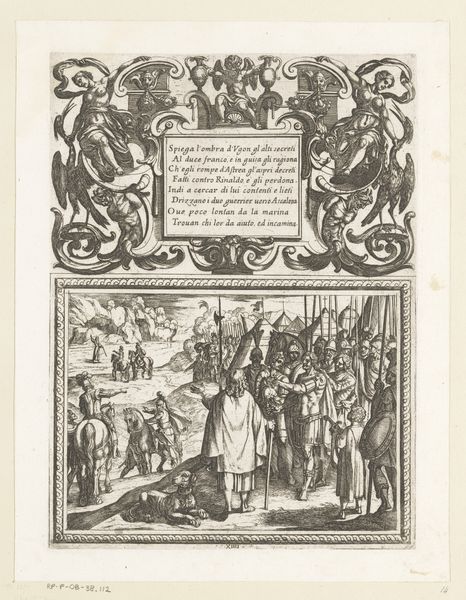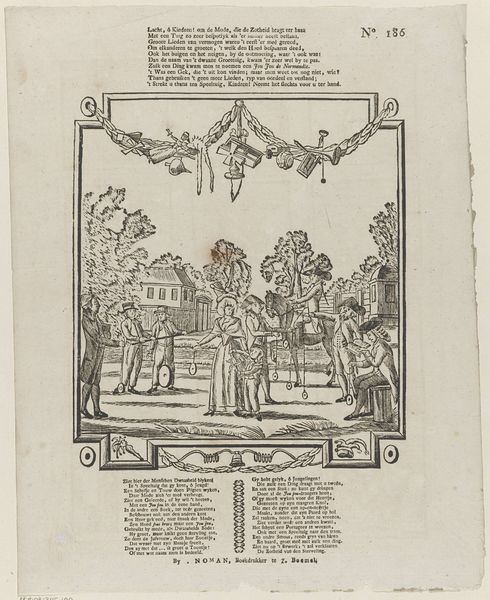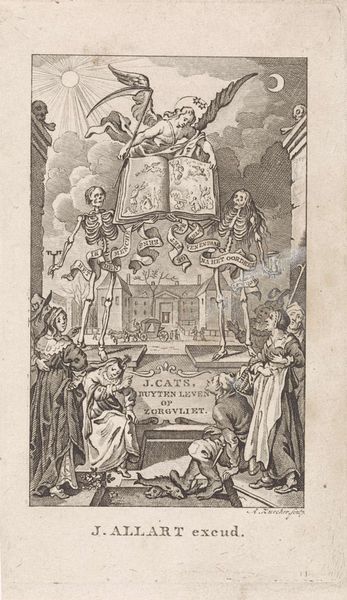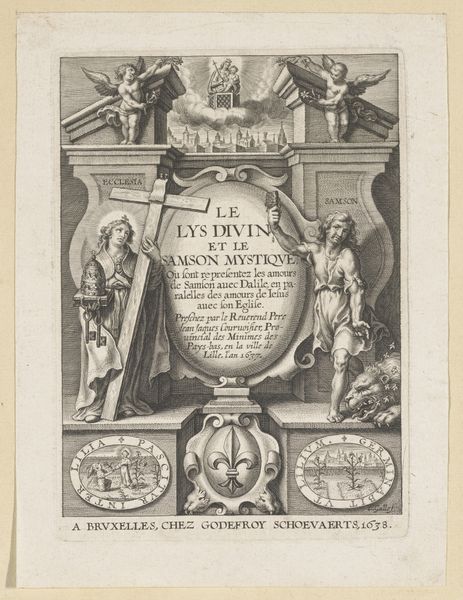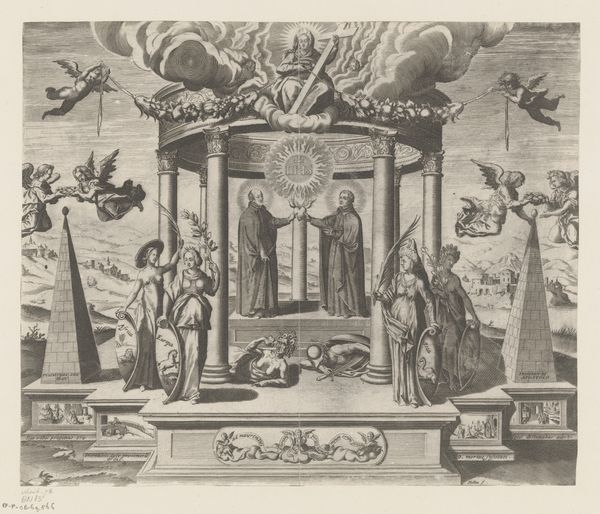
Seth en Sem naast twee obelisken en een altaar met geofferde bokken 1655 - 1659
0:00
0:00
print, engraving
#
allegory
#
baroque
# print
#
figuration
#
line
#
history-painting
#
engraving
Dimensions: height 197 mm, width 160 mm
Copyright: Rijks Museum: Open Domain
Editor: Here we have Claude Mellan’s engraving, "Seth en Sem naast twee obelisken en een altaar met geofferde bokken," created sometime between 1655 and 1659. I'm immediately struck by how much is packed into a single image. What's your read on the symbology at play here? Curator: It's a veritable tapestry of symbols, isn't it? The juxtaposition of Seth and Shem, figures rooted in different traditions, suggests an attempt at reconciliation or perhaps even a subtle power dynamic. Note the obelisks, ancient symbols of stability and power, flanking the altar—what does their presence evoke for you? Editor: Power, certainly, but also a sense of ancient history looming over the figures. The sacrificed goats feel... discordant with the angelic figures floating above. Curator: Precisely. Think about the role of sacrifice in both Jewish and Christian traditions, and how those traditions connect to older, pagan rites. Mellan's inclusion of these contrasting elements highlights the complexities of religious evolution, doesn't it? The angels, typically symbols of divine grace, become part of a more complicated narrative about faith and its historical manifestations. What about the inscription, "Le Christianisme Naissant dans la Gentilité"? Editor: So, it’s literally an image of Christianity being born among the gentiles. It’s all so deliberately layered! I was seeing conflicting images, but this brings everything into focus. The image brings clarity to my understanding. Curator: Indeed! The image serves as a powerful reminder of how deeply intertwined religious and cultural memory truly are, with older, inherited symbols persisting even within new belief systems. This really encourages us to question the continuous evolution of thought through visual cues.
Comments
No comments
Be the first to comment and join the conversation on the ultimate creative platform.
